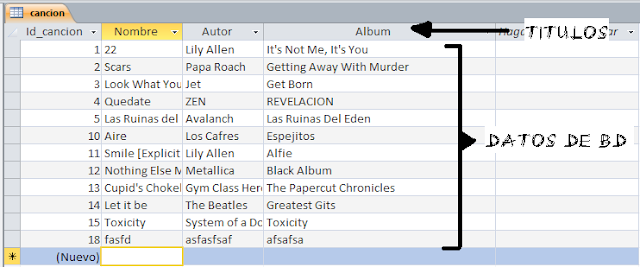- EJERCICIO
Tengo que hacer un programa, en la interfaz hay que digitar dentro de una EDIT(caja de texto) una palabra, y cuando le doy CALCULAR, que me calcule las vocales, también calcular si el total de cada vocal es par o impar
EJEMPLO si el usuario digita SHAMIRJAVAI o (shamirjavai) el resultado tiene que ser:
SHAMIRJAVAI = 11
A=3 PAR
E=O PAR
I=2 PAR
O=0 PAR
U=0 PAR
CLARO SUPONIENDO QUE EL NUMERO "0" LO CONSIDEREN NUMERO "PAR" PERO MAS ABAJO LE PONGO PARA LOS DOS CASOS, PAR O IMPAR.
- RESULTADO
- COD. FUENTE
/**
*
* E-Mail : shamirdhc31@gmail.com
* Blog : http://javadhc.blogspot.com
*
*/
/*
* tengo que hacer un programa, en la interfaz hay que digitar dentro de una
* EDIT(caja de texto) una palabra, y cuando le doy CALCULAR, que me calcule
* las vocales, tambien calcular si el total de cada vocal es par o impar
* EJEMPLO si el usuario digita SHAMIRJAVAI o (shamirjavai) el resultado tiene que ser:
SHAMIRJAVAI = 11
A=3 PAR
E=O PAR
I=2 PAR
O=0 PAR
U=0 PAR
* CLARO SUPONIENDO QUE EL NUMERO "0" LO CONSIDEREN NUMERO "PAR"
* PERO MAS ABAJO LE PONGO PARA LOS DOS CASOS, PAR O IMPAR
*/
import java.awt.FlowLayout;
import java.awt.event.ActionEvent;
import java.awt.event.ActionListener;
import javax.swing.*;
public class ContadorVocales extends JFrame implements ActionListener
{
public JTextArea txtMiCaja = new JTextArea(20,30);
public JButton btnCalcular = new JButton("CALC. VOCALES");
public ContadorVocales()
{
super("CONTADOR DE VOCALES");
this.setDefaultCloseOperation(JFrame.EXIT_ON_CLOSE);
this.setSize(400,430);
FlowLayout DISTRIBUIDOR = new FlowLayout(FlowLayout.CENTER,10,10);
this.setLayout(DISTRIBUIDOR);
this.btnCalcular.addActionListener(this);
this.add(this.txtMiCaja);
this.add(this.btnCalcular);
this.setVisible(true);
}
@Override
public void actionPerformed(ActionEvent AE)
{
char[] ArrayTexto = this.txtMiCaja.getText().toCharArray();
int[] Vocales = new int[5];
for(int i=0 ; i < ArrayTexto.length() ; i++)
{
switch(ArrayTexto[i])
{
case 'a': Vocales[0]++;break;
case 'A': Vocales[0]++;break;
case 'e': Vocales[1]++;break;
case 'E': Vocales[1]++;break;
case 'i': Vocales[2]++;break;
case 'I': Vocales[2]++;break;
case 'o': Vocales[3]++;break;
case 'O': Vocales[3]++;break;
case 'u': Vocales[4]++;break;
case 'U': Vocales[4]++;break;
}
}
JOptionPane.showMessageDialog(null,"EL TEXTO ESCRITO ES : \n\n" + this.txtMiCaja.getText()
+ "\n\n TOTAL : " + ArrayTexto.length
+ "\n\n\n VOCALES : \n\n"
+ "\nVOCAL 'A' = " + Vocales[0] + " ES " + ParImpar(Vocales[0])
+ "\nVOCAL 'E' = " + Vocales[1] + " ES " + ParImpar(Vocales[1])
+ "\nVOCAL 'I' = " + Vocales[2] + " ES " + ParImpar(Vocales[2])
+ "\nVOCAL 'O' = " + Vocales[3] + " ES " + ParImpar(Vocales[3])
+ "\nVOCAL 'U' = " + Vocales[4] + " ES " + ParImpar(Vocales[4]));
}
public String ParImpar(int Num)
{
//-- SI NO CONSIDERAS QUE EL NUMERO 0 ES "PAR" ENTONCES
//-- CAMBIA ESTA PARTE "if(Num % 2 == 0)" POR "if(Num % 2 == 0 && Num != 0)"
if(Num % 2 == 0)
{
return "PAR";
}
else
{
return "IMPAR";
}
}
public static void main(String[] args)
{
ContadorVocales ContVocales = new ContadorVocales();
}
}
DALE CLICK EN LA IMAGEN PARA BAJARTE EL PROYECTO CON LOS 2 EJERCICIOS
IMPORTANTE : "TODOS LOS CODIGOS INDICADOS AQUI SON ESCRITOS POR MI PERSONA, ASI QUE CUALQUIER DUDA O EJERCICIO QUE NO PUEDAN RESOLVER, NO DUDEN EN MANDARME UN E-MAIL A MI CORREO"
shamirdhc31@gmail.com





